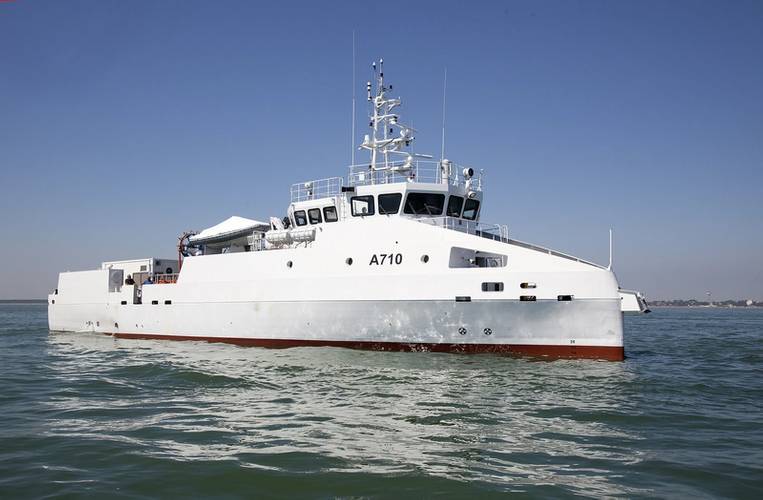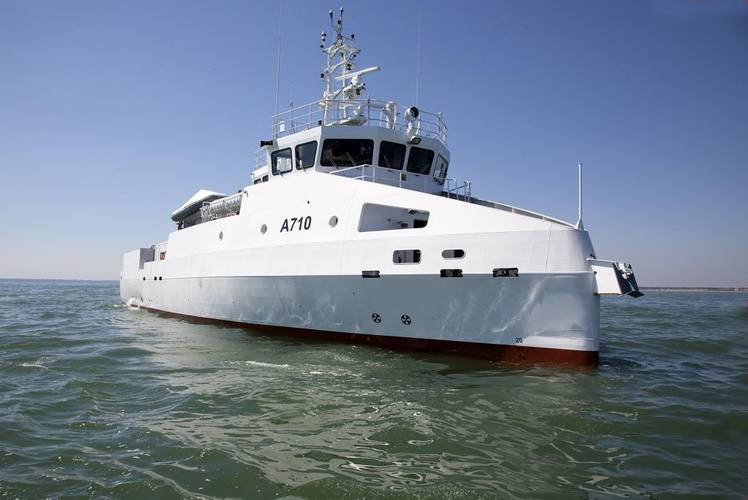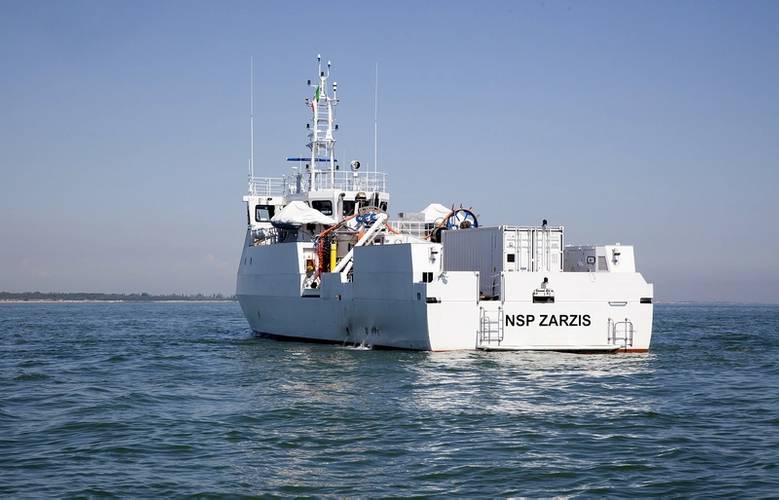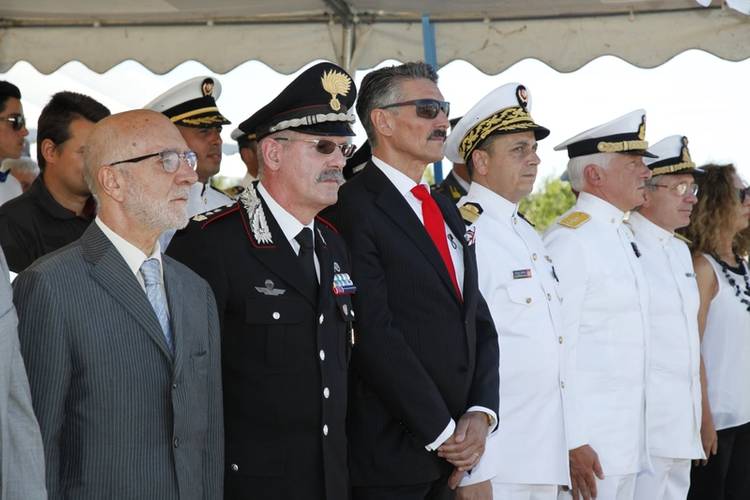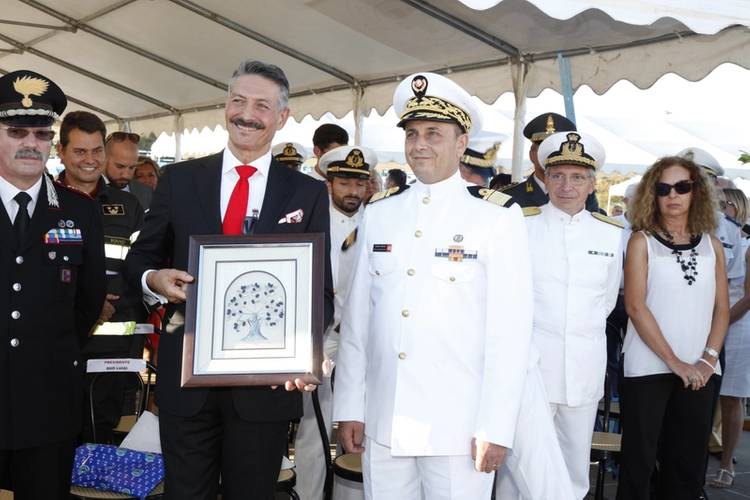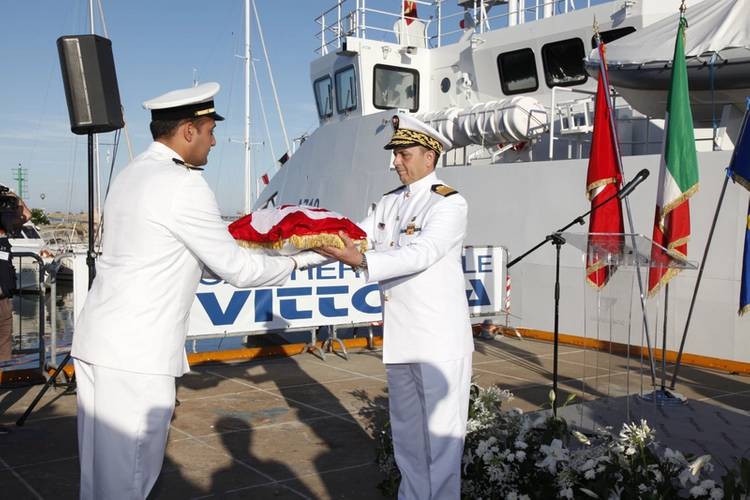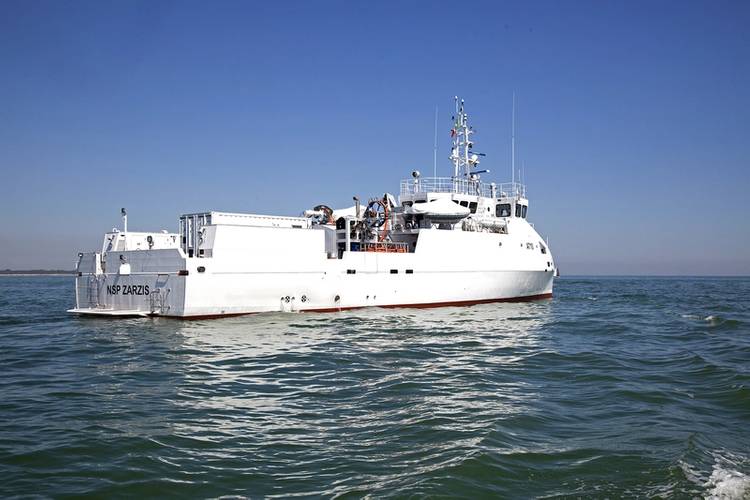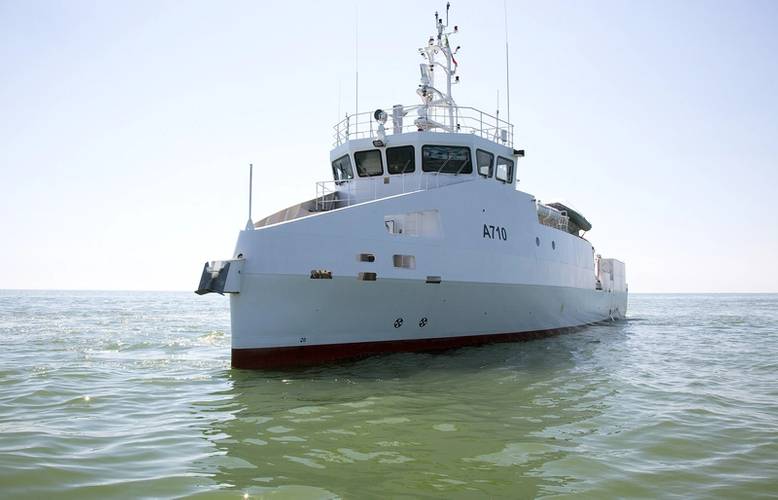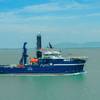The Tunisian government has taken delivery of a new training ship, Zarzis A710, which will support diving and security works in air and sea areas of the Mediterranean. The vessel was built by Vittoria Shipyard SpA and commissioned by the Tunisian Defense Ministry as part of the Tunisian-Italian cooperation agreement signed in spring 2015.
The Diving Support Vessel will be deployed by the Tunisian authorities as part of the stabilization and pacification operation in North Africa and the Mediterranean area. In particular, the vessel will be used to train the students of the Zarzis diving school.
The official handover ceremony took place at the port of Albarella, Rovigo, in the presence of Admiral Abderraouf Atallah, Chief of Staff of the Tunisian Navy, Rear-Admiral Marcello Bernard, who was representing the Chief of Staff of the Italian Navy, and Rear-Admiral Giuseppe Abbamonte, the head of Unit III Navarm-Defence Ministry. Welcoming the dignitaries was Luigi Duò, president of Vittoria Shipyard.
Vittoria Shipyard, based in Adria, is one of the largest constructors in Italy of medium-to-large professional ships, and built the training ship over the course of seven months. The Zarzis A710 is a 36-meter monohull, and can carry 12 crew as well as 18 divers. The vessel has a top speed of 17 knots and a cruising speed of 12 knots. The vessel is equipped with a compression chamber; a system to produce, purify and store breathable air and therapeutic gas; and a diving bell that can take divers into the water up to 100 meters deep. The boat will also be equipped with a sophisticated DP2 positioning system that combines the push of the main propellers with that of the bow thrusters to ensure that exactly the same position is maintained. This equipment follows the main international standards and those of RINA, the Italian Naval Registry.
“The delivery of Zarzis A710 consolidates our relationship of collaboration and mutual esteem with the Tunisian authorities,” said Luigi Duò, president of Vittoria Shipyard. “In the past, our shipyard has built and delivered 12 patrol boats to the Tunisian Navy and Coastguard. In general, we are consolidating our international presence. The recent agreement with SIMA Perù, a public company working in the naval sector, is the first step in a new path of internationalization, based not just on building ships but also on the transfer of technology and know-how, for which we ask no national boundaries.”
Technical Specifications:
Overall length: 36.62 m
Beam: 8.6 m
Draught: 1.7 m
Maximum speed: 17 knots
Full load displacement: 230 metric tons, approx.
Diving equipment:
1 hyperbaric chamber for 4 divers; 1 wet bell for 3 divers; 1 LARS (launch and recovery system)
Engines:
2 MTU 12V2000 M84; 2 x 1220 Kw @ 2450 rpm
Classification:
RINA C +Hull Mach – Osv (Diving Support); Offshore Navigation – Dyna – Pos
Main characteristics:
The Diving Support Vessel is equipped with a sophisticated DP2 dynamic positioning system, which combines the push of the main propulsion propellers with that of the bow thrusters, to ensure that exactly the same position is maintained.
The vessel is equipped with a decompression chamber; production, purification and storage system for breathable air and therapeutic gas; and a diving bell which can take students into the water up to 100 meters deep.
The vessel is equipped with a LARS (launch and recovery) system to ensure that the diving bell can be immersed and recovered safely.
The diving bell is a semi-open structure that can hold up to 4 divers. Each diver has an umbilical cable that provides breathable gas supply, audio-video communications and hot water supply to control body temperature. The structure can achieve the considerable operational depth of 100m.
On board is also present a system to produce breathable air and NITROX, a special breathing gas mix with a greater oxygen component than normal air. This gas mix can increase diving times at average depths and reduce contextually the amount of nitrogen present in the air breathed, the main gas responsible for any decompression sickness.











